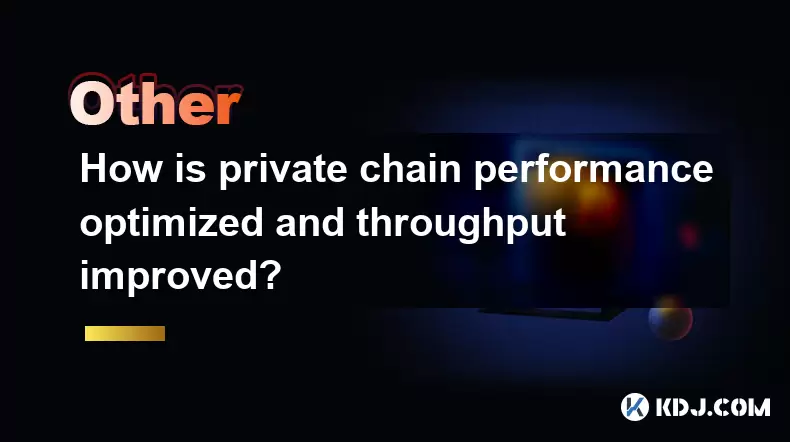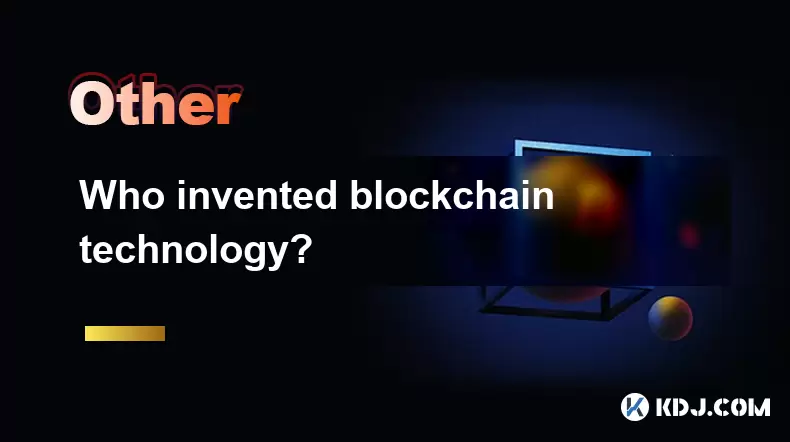-
 Bitcoin
Bitcoin $114800
-3.31% -
 Ethereum
Ethereum $3641
-5.84% -
 XRP
XRP $2.948
-6.36% -
 Tether USDt
Tether USDt $0.9998
-0.03% -
 BNB
BNB $772.4
-3.97% -
 Solana
Solana $169.1
-6.68% -
 USDC
USDC $0.9999
-0.01% -
 Dogecoin
Dogecoin $0.2056
-8.09% -
 TRON
TRON $0.3247
-0.18% -
 Cardano
Cardano $0.7239
-7.43% -
 Hyperliquid
Hyperliquid $39.71
-8.60% -
 Stellar
Stellar $0.3912
-7.84% -
 Sui
Sui $3.510
-10.17% -
 Chainlink
Chainlink $16.59
-8.03% -
 Bitcoin Cash
Bitcoin Cash $560.5
-3.65% -
 Hedera
Hedera $0.2464
-10.08% -
 Avalanche
Avalanche $22.03
-7.87% -
 Ethena USDe
Ethena USDe $1.001
-0.02% -
 UNUS SED LEO
UNUS SED LEO $8.947
0.21% -
 Toncoin
Toncoin $3.389
-2.58% -
 Litecoin
Litecoin $104.9
-5.23% -
 Shiba Inu
Shiba Inu $0.00001220
-6.67% -
 Polkadot
Polkadot $3.652
-6.10% -
 Uniswap
Uniswap $9.213
-9.05% -
 Monero
Monero $307.2
-2.93% -
 Dai
Dai $0.9998
-0.02% -
 Bitget Token
Bitget Token $4.367
-2.89% -
 Cronos
Cronos $0.1374
-6.80% -
 Pepe
Pepe $0.00001056
-8.65% -
 Aave
Aave $257.3
-7.31%
How is private chain performance optimized and throughput improved?
Private blockchains can enhance performance through optimized consensus mechanisms, network enhancements, transaction processing strategies, and scalability solutions.
May 16, 2025 at 03:00 am

Private blockchain networks are often utilized by enterprises and organizations to streamline processes, increase security, and maintain control over their data. To optimize the performance of private chains and improve throughput, several strategies can be implemented. This article will delve into various techniques and approaches that can be adopted to enhance the efficiency and scalability of private blockchains.
Understanding Private Chain Performance
The performance of a private blockchain is determined by factors such as transaction processing speed, network latency, and the ability to handle a high volume of transactions. Throughput refers to the number of transactions that can be processed within a given time frame. In a private blockchain, optimizing these aspects is crucial for meeting the specific demands of an organization.
Consensus Mechanism Optimization
One of the key areas to focus on for improving private chain performance is the consensus mechanism. Unlike public blockchains, private blockchains can leverage more centralized and efficient consensus algorithms. Here are some approaches to optimize the consensus mechanism:
Implementing Proof of Authority (PoA): PoA is a suitable consensus algorithm for private blockchains because it relies on a set of pre-approved validators to create new blocks. This reduces the computational overhead and increases transaction processing speed.
Using Practical Byzantine Fault Tolerance (PBFT): PBFT is another consensus algorithm that can be used in private blockchains. It is designed to tolerate up to one-third of faulty nodes and can achieve higher throughput compared to traditional consensus mechanisms.
Customizing Consensus Algorithms: Depending on the specific needs of the organization, it might be beneficial to develop a custom consensus algorithm that balances security with performance.
Network and Infrastructure Enhancements
The underlying network and infrastructure play a critical role in the performance of a private blockchain. Here are some ways to enhance them:
Optimizing Network Topology: A well-designed network topology can reduce latency and improve data transmission speeds. Consider using a star or mesh topology to enhance communication between nodes.
Utilizing High-Performance Hardware: Investing in high-performance servers and storage solutions can significantly boost the processing capabilities of the blockchain network.
Implementing Load Balancing: Load balancing techniques can distribute transactions across multiple nodes, preventing any single node from becoming a bottleneck and ensuring smoother operation.
Transaction Processing Optimization
Optimizing how transactions are processed is another critical aspect of improving private chain performance. Here are some strategies:
Batch Processing: Grouping multiple transactions into a single batch can reduce the overhead associated with processing individual transactions, thereby increasing throughput.
Parallel Processing: Implementing parallel processing techniques allows multiple transactions to be processed simultaneously, significantly enhancing the speed of transaction validation and execution.
Optimizing Smart Contract Execution: Smart contracts often play a significant role in transaction processing. Optimizing their code for efficiency can lead to faster execution times. This includes minimizing the number of operations and using efficient algorithms within the smart contracts.
Data Management and Storage Solutions
Efficient data management and storage solutions are essential for maintaining high performance in private blockchains. Here are some techniques to consider:
Implementing Off-Chain Storage: Storing large volumes of data off-chain can reduce the load on the blockchain network, freeing up resources for transaction processing. Solutions like InterPlanetary File System (IPFS) can be used for off-chain storage.
Using State Channels: State channels allow transactions to be processed off-chain and only settled on the blockchain when necessary. This can significantly improve throughput by reducing the number of on-chain transactions.
Optimizing Database Management: Using efficient database management systems and techniques, such as indexing and caching, can speed up data retrieval and processing.
Scalability Solutions
To ensure that a private blockchain can scale effectively as the volume of transactions grows, several scalability solutions can be implemented:
Sharding: Sharding involves dividing the blockchain into smaller, more manageable pieces called shards. Each shard can process transactions independently, thereby increasing the overall throughput of the network.
Layer 2 Scaling Solutions: Implementing layer 2 solutions, such as sidechains or rollups, can offload some of the transaction processing from the main blockchain, improving its performance.
Optimizing Block Size and Frequency: Adjusting the block size and frequency can help balance the trade-off between security and performance. Larger blocks can accommodate more transactions but may increase latency, while smaller, more frequent blocks can improve transaction speed but may increase the load on the network.
Monitoring and Performance Tuning
Continuous monitoring and performance tuning are essential for maintaining optimal performance in a private blockchain. Here are some steps to achieve this:
Implementing Performance Monitoring Tools: Utilize tools that can track key performance indicators (KPIs) such as transaction throughput, latency, and network health. This data can help identify bottlenecks and areas for improvement.
Regular Performance Audits: Conduct regular audits to assess the overall performance of the blockchain network. This can involve stress testing the system to identify its limits and areas where optimization is needed.
Continuous Optimization: Based on the insights gained from monitoring and audits, continuously optimize the blockchain network. This may involve tweaking consensus algorithms, adjusting network configurations, or implementing new scalability solutions.
Frequently Asked Questions
Q1: Can private blockchains be as secure as public blockchains?
A1: Private blockchains can be highly secure, but their security model differs from public blockchains. While public blockchains rely on a decentralized network of nodes for security, private blockchains often use a more centralized approach with pre-approved validators. This can provide robust security if properly managed, but it requires careful consideration of access controls and network security measures.
Q2: How does the choice of programming language affect private blockchain performance?
A2: The choice of programming language can significantly impact the performance of a private blockchain. Languages like Go and Rust are often preferred for their efficiency and concurrency features, which can enhance transaction processing speed. However, the specific needs of the application and the expertise of the development team should also be considered when choosing a language.
Q3: What are the trade-offs between privacy and performance in private blockchains?
A3: In private blockchains, achieving high levels of privacy can sometimes come at the cost of performance. Techniques like zero-knowledge proofs can enhance privacy but may increase the computational load, thereby reducing throughput. Organizations need to balance their privacy requirements with performance needs to optimize their blockchain solution.
Q4: How can private blockchains integrate with existing enterprise systems?
A4: Private blockchains can be integrated with existing enterprise systems through APIs and middleware solutions. This allows data to flow seamlessly between the blockchain and other systems, enabling automation and streamlining of business processes. Careful planning and design are required to ensure that the integration does not compromise the performance or security of either the blockchain or the enterprise systems.
Disclaimer:info@kdj.com
The information provided is not trading advice. kdj.com does not assume any responsibility for any investments made based on the information provided in this article. Cryptocurrencies are highly volatile and it is highly recommended that you invest with caution after thorough research!
If you believe that the content used on this website infringes your copyright, please contact us immediately (info@kdj.com) and we will delete it promptly.
- Bitcoin, Ethereum, and Investor Behavior: A New York Minute on Crypto Trends
- 2025-08-01 15:10:12
- Tether's Q2 Triumph: USDT Supply Soars Amidst Profit Surge!
- 2025-08-01 15:10:12
- Ethereum ETF Holdings: A Corporate Treasury Revolution?
- 2025-08-01 15:30:12
- Ethereum's Wild Ride: Funding Rates, Price Drops, and Retail to the Rescue!
- 2025-08-01 15:30:12
- Ethereum Under Pressure: Crypto Market Drop Explained
- 2025-08-01 15:35:11
- Ethereum ETF Mania: Inflows Surge, Market Rises, What's Next?
- 2025-08-01 15:35:11
Related knowledge

How to start a business using blockchain?
Jul 28,2025 at 12:36am
Understanding the Basics of Blockchain TechnologyBefore diving into the process of starting a business using blockchain, it's crucial to understand wh...

What is a token on the blockchain?
Jul 21,2025 at 07:00am
Understanding the Concept of a TokenIn the realm of blockchain technology, a token is a digital representation of an asset or utility that exists on a...

Can blockchain be used for identity verification?
Jul 18,2025 at 02:14pm
Understanding Identity Verification in the Digital AgeIn the modern digital landscape, identity verification has become a critical component for ensur...

What is a consensus mechanism in blockchain?
Jul 21,2025 at 03:01am
Understanding the Basics of Consensus MechanismsA consensus mechanism is a critical component of any blockchain network. It refers to the process by w...

How to explain blockchain to someone with no tech background?
Jul 18,2025 at 11:08pm
Understanding the Basics of BlockchainTo explain blockchain to someone with no tech background, it's essential to start with simple analogies and avoi...

Who invented blockchain technology?
Jul 23,2025 at 01:28am
Origins of Blockchain TechnologyBlockchain technology did not emerge from a single inventor or institution. Instead, it evolved through a series of ac...

How to start a business using blockchain?
Jul 28,2025 at 12:36am
Understanding the Basics of Blockchain TechnologyBefore diving into the process of starting a business using blockchain, it's crucial to understand wh...

What is a token on the blockchain?
Jul 21,2025 at 07:00am
Understanding the Concept of a TokenIn the realm of blockchain technology, a token is a digital representation of an asset or utility that exists on a...

Can blockchain be used for identity verification?
Jul 18,2025 at 02:14pm
Understanding Identity Verification in the Digital AgeIn the modern digital landscape, identity verification has become a critical component for ensur...

What is a consensus mechanism in blockchain?
Jul 21,2025 at 03:01am
Understanding the Basics of Consensus MechanismsA consensus mechanism is a critical component of any blockchain network. It refers to the process by w...

How to explain blockchain to someone with no tech background?
Jul 18,2025 at 11:08pm
Understanding the Basics of BlockchainTo explain blockchain to someone with no tech background, it's essential to start with simple analogies and avoi...

Who invented blockchain technology?
Jul 23,2025 at 01:28am
Origins of Blockchain TechnologyBlockchain technology did not emerge from a single inventor or institution. Instead, it evolved through a series of ac...
See all articles

























































































